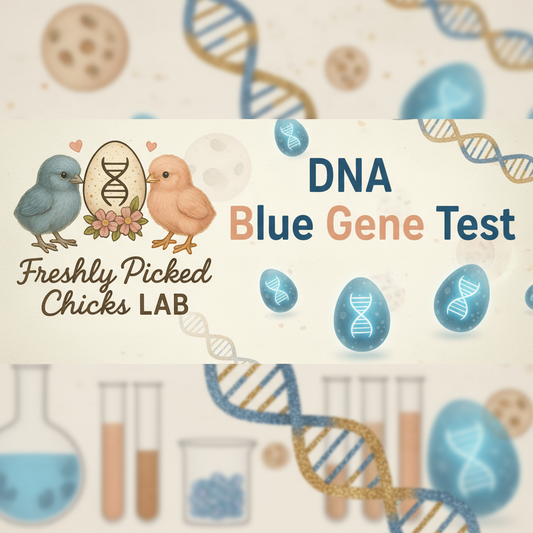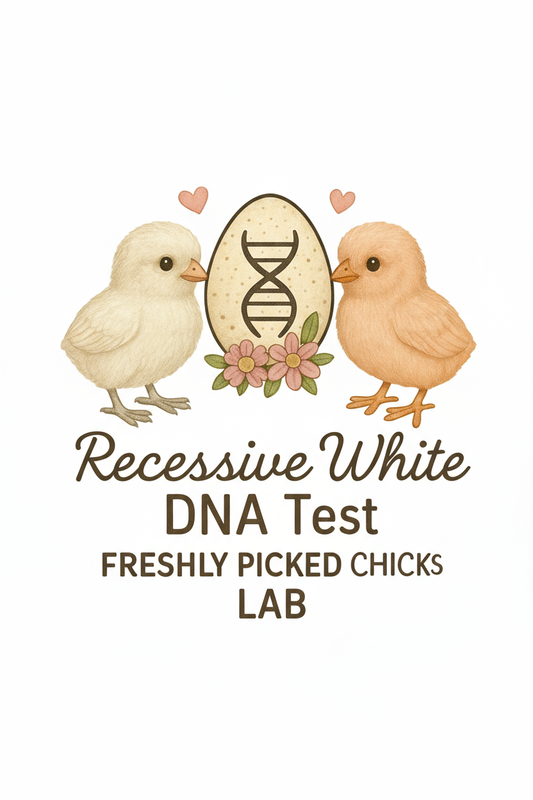Hatching SHIPPED eggs Tips
Shipped Hatching Eggs: Tips for Ensuring Success
Are you considering purchasing shipped hatching eggs to start your own flock of chickens or other poultry? While this can be a great way to grow your flock, there are some important factors to consider to ensure a successful outcome. In this article, we will provide you with expert tips on how to handle and care for shipped hatching eggs to maximize your chances of a successful hatch.
Fertile Eggs are Key
When it comes to hatching eggs, the most crucial factor is ensuring that the eggs are fertile - thats my job as the breeder. This means that there needs to be a rooster present to fertilize the eggs before they are laid. Without fertilization, the eggs will not develop into viable embryos, and your hatch will be unsuccessful. I use 1 roo to 8-10 hens per pen and do weekly fertility checks. I do this by cracking eggs from each pen to see if it is fertile or not (solid white dot, not fertile bullseye- fertile) BUT did you know you CANNOT tell if an egg was fertilized AFTER incubation has started! Click here for article https://www.facebook.com/FreshlyPickedChicks/posts/pfbid02UfSqE18Epg2HPzTvx6gvGz6CY1umKgkSTaLmZFisbSMMJ8CA5oMPJ6urc72tt52yl
Freshness Matters
Another important consideration when it comes to shipped hatching eggs is their freshness. Ideally, you want to receive eggs that are between 0-10 days old, as this increases the likelihood of a successful hatch. While eggs older can still be viable, the fresher the eggs, the better your chances. I personally ship eggs 1-3 days old. I also prefer to use FedEx as I have had better luck with them being delivered quicker than USPS.
Temperature is Critical
Proper temperature control is crucial when handling shipped hatching eggs. The eggs should be stored at a consistent temperature of 55 degrees Fahrenheit to maintain their viability. Before loading the eggs into the incubator, allow them to come up to room temperature gradually to prevent temperature shock. Sudden temperature changes can negatively impact the development of the embryos inside the eggs.
Gentle Handling is Essential
When handling shipped hatching eggs, it is important to be gentle to avoid damaging the delicate embryos inside. Store the eggs with the large end up, as this helps keep the air sac in the right position for optimal development. Additionally, tilt the eggs from one side to the other twice daily to prevent the yolk from sticking to the inside of the eggshell. This simple practice can significantly increase your hatch rate. I ship double boxed and custom foam inserts. Majority of their trip they will already be in the correct position (pointy end down). This helps from dislodged air sacs. YES, dislodged air sacs CAN still hatch but may need some assistance.
Setting Up Your Incubator
One of the most important extra items you can have for your incubators is a Govee. Inexpensive but can save you a lot of heartache. The first step in hatching chicken eggs is to set up your incubator correctly. Make sure to calibrate the temperature and humidity levels according to the recommendations for the type of eggs you are hatching. It’s essential to maintain a consistent temperature of around 99.5 - 100 degrees Fahrenheit and a humidity level of around 40-50% throughout the entire incubation period. Investing in a high-quality incubator will greatly increase your chances of a successful hatch. PRO TIP: I personally set my humidity at 38% when hatching rainbow eggs. The darker the eggs and heavy bloomed eggs are much harder to hatch and take less humidity. I then bump humidity up to 55% for hatch. I use a Hatching Time 180CT Cabinet incubator.
Egg Rotation and Turning
During the incubation period, it’s crucial to rotate and turn the eggs regularly to ensure the embryos develop properly. Eggs should be turned at least three times a day to prevent the embryo from sticking to the shell membrane. Investing in an automatic egg turner can help make this process much easier. Remember to stop turning the eggs three days before they are due to hatch to allow the chicks to position themselves for hatching.
PRO-TIP. It is common for shipped eggs to have dislodged air sacs, I highly recommend not turning for a few days to help the air sacs settle and hopefully reattach.
Monitoring Egg Development
UNSHIPPED EGGS:Throughout the incubation period, it’s essential to monitor the development of the embryos closely. Candling the eggs around day 7 and day 14 will allow you to check for signs of healthy development, such as blood vessels and movement. Remove any eggs that appear clear or have signs of bacteria growth to prevent contamination. Healthy eggs will darken as the embryos develop, and you may even see the chick moving inside the egg.
SHIPPED EGGS: These eggs have already been through so much, I personally do not candle until day 18 on lock down. The more the eggs are handled the chance of doing more damage. I DO however watch and look at the eggs to ensure to seepage, smells or cracks at taking place.
Hatching Day Preparation
As hatching day approaches, it’s essential to prepare for the arrival of the chicks. Make sure to keep the incubator clean and free from any debris that could interfere with the hatching process. Increase the humidity level to around 45-50% to soften the eggshells and make hatching easier for the chicks. Resist the temptation to help the chicks hatch, as this can cause more harm than good. Allow nature to take its course and let the chicks hatch on their own.
PRO-TIP. Do not open the incubator for 24 hours AFTER hatch. This will allow late hatchers to hatch and the early ones dry off. When you open the incubator you risk shrink wrapping the unhatched eggs which will result in fully developed chicks who could not break out of their shell.
Welcoming Your New Chicks
Once the chicks have hatched, it’s time to welcome them into the world! Transfer the chicks to a warm brooder with a heat lamp to keep them warm and comfortable. Provide them with fresh water and chick starter feed to ensure they get off to a healthy start. Spend time observing and bonding with your new chicks to help them feel safe and secure in their new environment. Before you know it, your chicks will be growing up into happy and healthy chickens!
Hatching chicken eggs can be a fun and rewarding experience with the right knowledge and preparation. By following these tips and tricks, you can increase your chances of a successful hatch and enjoy watching your chicks grow into healthy chickens. Remember, patience is key when hatching eggs, so take your time and enjoy the journey. Happy hatching!
Featured collection
-
DNA Gender Test
Regular price $10.00 USDRegular price -
DNA Blue Gene Test
Regular price $15.00 USDRegular price -
DNA Recessive White
Regular price $15.00 USDRegular price



